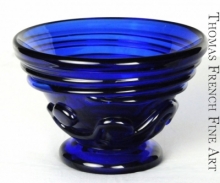

Thomas French Fine Art
Harry Boyer Art Glass
A native of Whitehouse, Ohio, Harry Boyer attended Bowling Green State University in the late 1960s and early 1970s. Harry originally planned to obtain a degree in science at BGSU and pursue art as a hobby, however that all changed when he took an Introduction to Glassblowing course with Dominick Labino (1910–1987). It was during his class with Labino that Harry began to understand the fascinating relationship between art and science and ultimately decided to focus his studies on sculpture and glass.
Labino along with fellow artist Harvey Littleton (1922- ) hosted the 1962 glassblowing workshops in a storage shed on the grounds of the Toledo Museum of Art where the American Studio Glass Movement began. During the workshop, they began experimenting with ways artists could create glassworks in their own private studios, rather than in factories. In addition to helping design the small pot furnace, Labino, then director of research for Johns Manville Corporation, supplied marbles that melted at a low temperature and produced glass that was more malleable and easier to blow. Ultimately, the workshop succeeded in making it feasible for glass artists to work in private studios and set the stage for the seminal event of the Studio Glass Movement.
After graduating from BGSU, Harry continued to use the techniques he learned from Labino in opening his first independent hot glass studio with his wife Kathleen in 1974 in Toledo, Ohio and conducting glass blowing demonstrations at Sauder Village where thousands of visitors viewed his work. In 1984, Harry and Kathleen left Ohio and together they opened Boyer Glassworks Studio and Gallery in Harbor Springs, a resort town located in Northwest Michigan near where the Boyers had frequently vacationed. Boyer Glassworks features a hot glass studio separated from the gallery by a glass partition so costumers are able to watch Harry at work while browsing shelves of his distinctive handblown glass and his wife Kathleen’s paintings.
In the studio, Harry uses a 2,000oF furnace to manipulate molten crystal into fine art glass. Over the years, Harry and Kathleen have worked together on glass design and experimented with new techniques. This exploration has allowed Harry to take an age old art form and make it his own with modern techniques and composition. Typically, Harry uses clear glass with high concentrations of color in the form of glass dots, canes, and shards that are laid out and fused into the surface of the hot glass to create layers of clear and colored glass. These glassworks are then cooled for up to three day and then ground, faceted, polished, and signed.
Harry’s art glass has evolved over the years through his exploration of form, including sculptures, vases, bowls, lamps, ornaments, figurines, paperweights, and collector marbles. Taking advantage of the properties of glass, the Boyers have also developed and perfected unique bubble patterns and floral designs including the “Pollock,” “Monet,” “Floral Fields,” “Trillium,” and “Bubblescape” series.
The inspiration behind this use of color and technique comes from a variety of sources. As indicated in the names of his series, painters such as Monet, Van Gogh, Seurat, DeKooning, Pollock and his wife Kathleen often influence Harry. Like Monet, Harry has also revealed that a lot of his compositions also come from seeing the interaction of color, light, and reflection in the landscapes of Northern Michigan. Furthermore, as with most artists, Harry has also been influenced by the history of his craft from the discovery of natural formation of volcanic glass to the development of glass blowing in ancient times. In addition to Labino, Harry was also inspired by the work of glassblowers Carl Kraft (1915-1995) and Brian Lonsway (1940-2001) of Toledo, Ohio.
Harry continues to make art glass and experiment with new ideas on a daily basis. His one of a kind pieces have been acquired by discriminating collectors and museums around the world and his work has been exhibited nationally. In 1988, Harry’s marbles were featured in the April issue of Smithsonian Magazine. Not long after marble collector Bert Cohen gifted the Smithsonian Harry’s “Rainbow Series” of marbles. In 2011-2012, three of his paperweights were included in Captured in Glass: Historic and Contemporary Paperweights at the Flint Institute of Art. This year, Harry also received the 2012 Eddi Award as a Visual Artist from the Crooked Tree Arts Center in Petoskey, MI. Harry and his wife Kathleen are great people and good friends of ours. Thomas French Fine Art has developed a decade long collection of Boyer glasswork comprised of some of Harry’s best work. These outstanding works of art remain affordable, look beautiful in any style of décor and would make excellent gifts this holiday season.
Paperweight
By
Harry Boyer
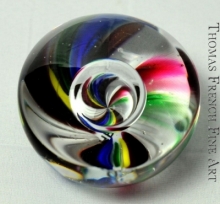
Trillium Paperweight
By
Harry Boyer
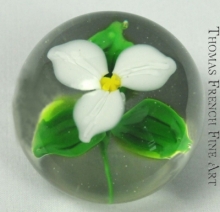
Paperweight
By
Harry Boyer
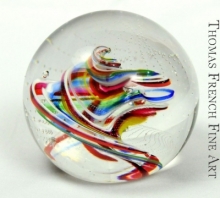
Paperweight
By
Harry Boyer
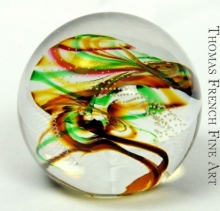
Paperweight
By
Harry Boyer
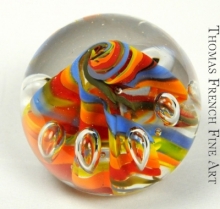
Monet Style Paperweight
By
Harry Boyer
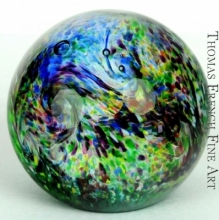
Monet Style Egg-Shaped Paperweight
By
Harry Boyer
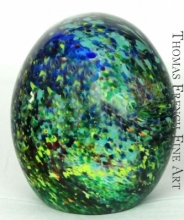
Purple and Green Jack-in-the-Pulpit Vase
By
Harry Boyer
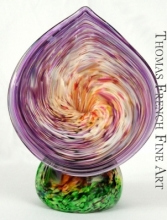
Purple Ribbed Vase
By
Harry Boyer
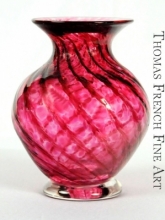
Monet Style Vase
By
Harry Boyer
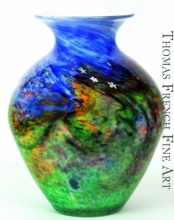
Red Jack-in-the-Pulpit Vase
By
Harry Boyer
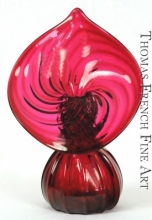
Free-form Paperweight
By
Harry Boyer
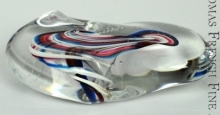
Rainbow Bowl with Fluted Rim
By
Harry Boyer
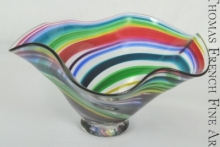
Spectrum Paperweight with Tiny Center Bubble
By
Harry Boyer
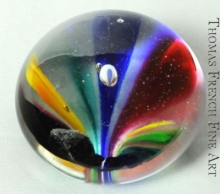
Cobalt Vase with "Lily Pad" Pattern
By
Harry Boyer
